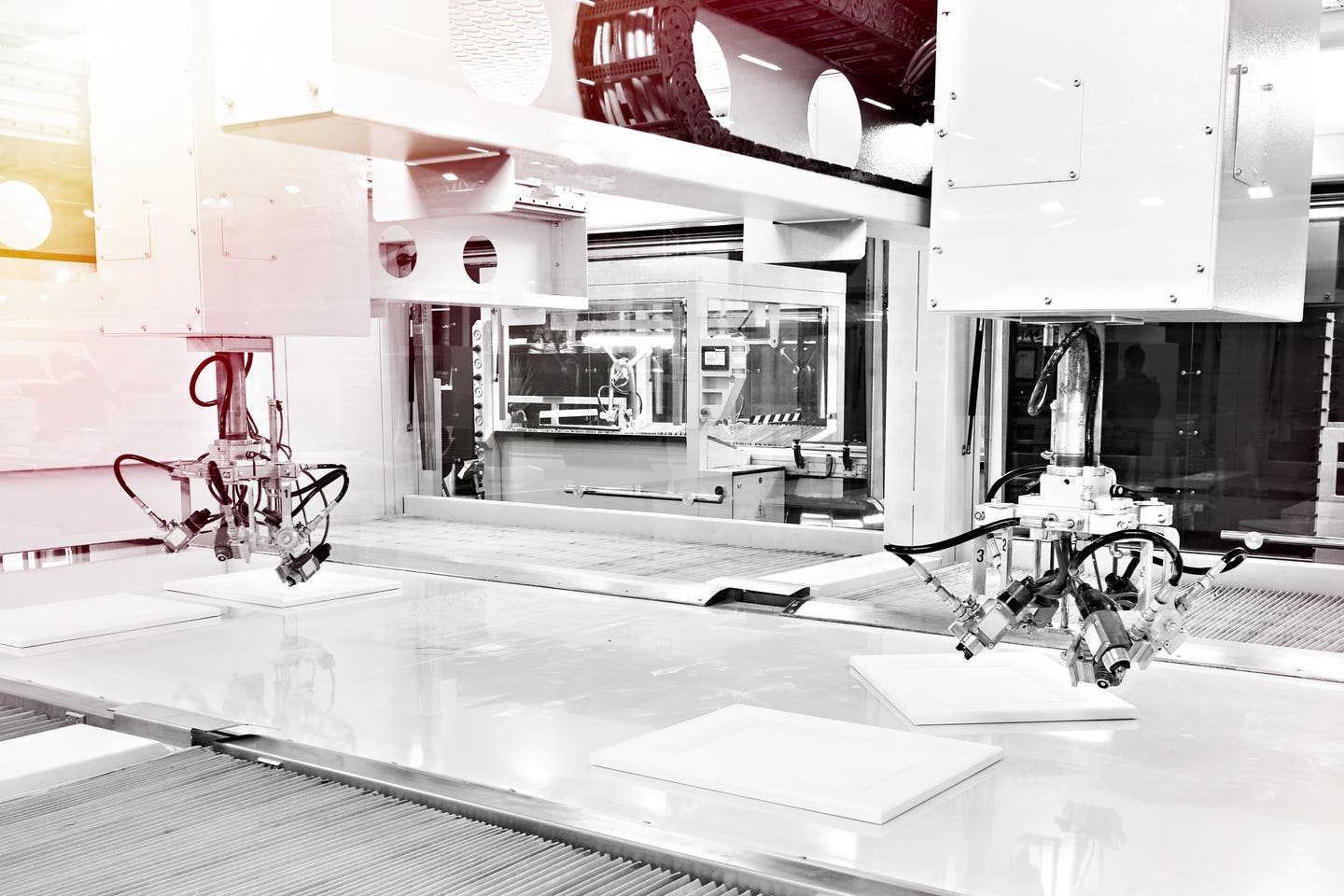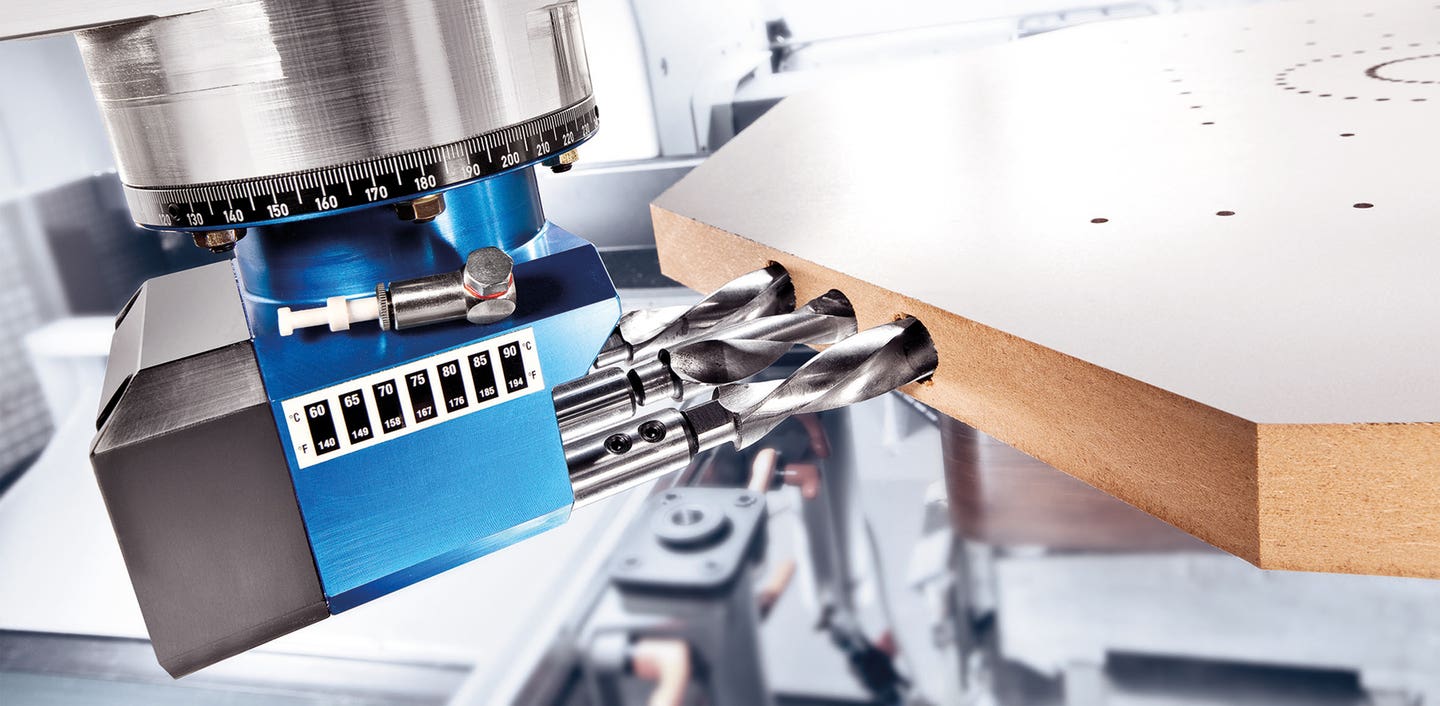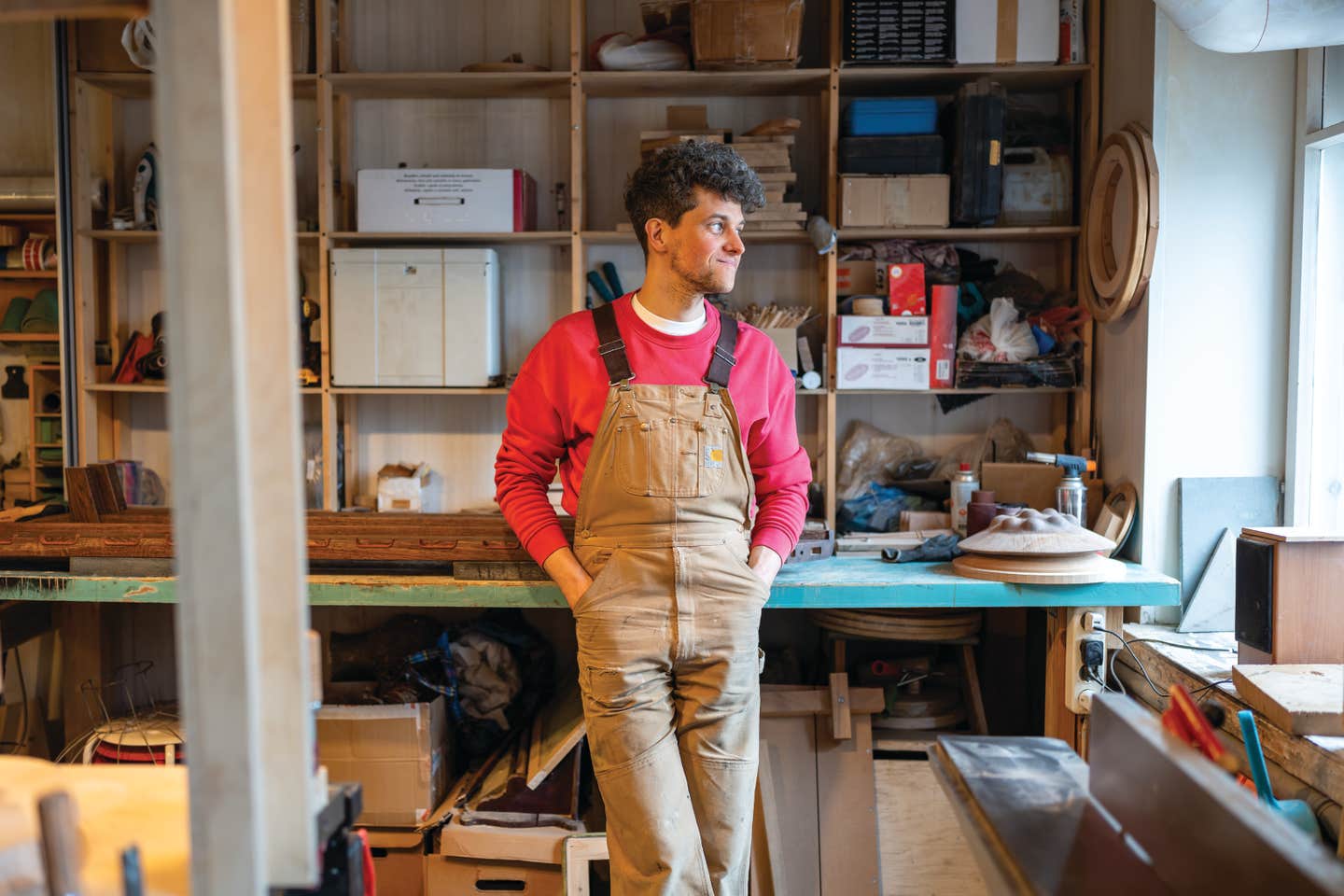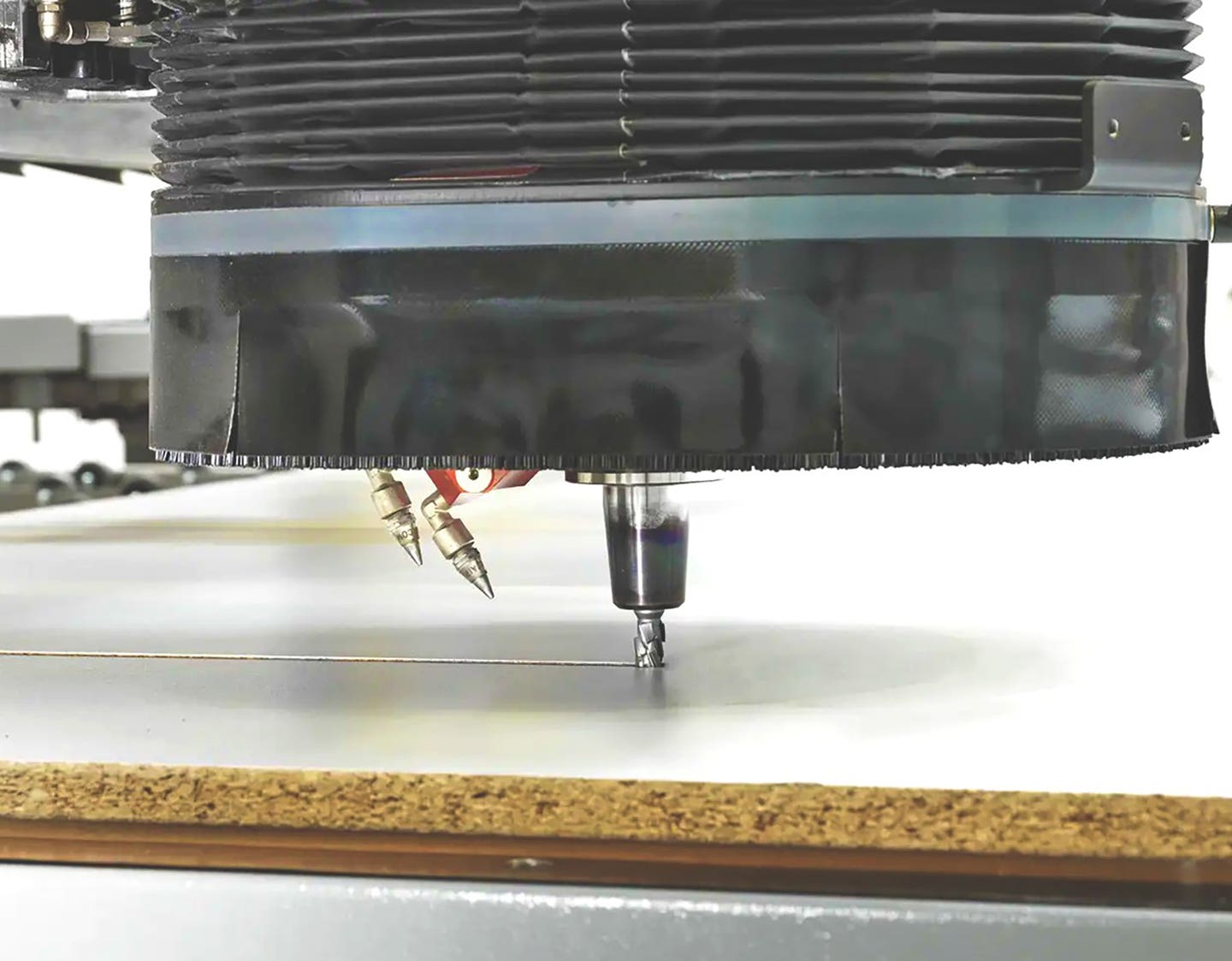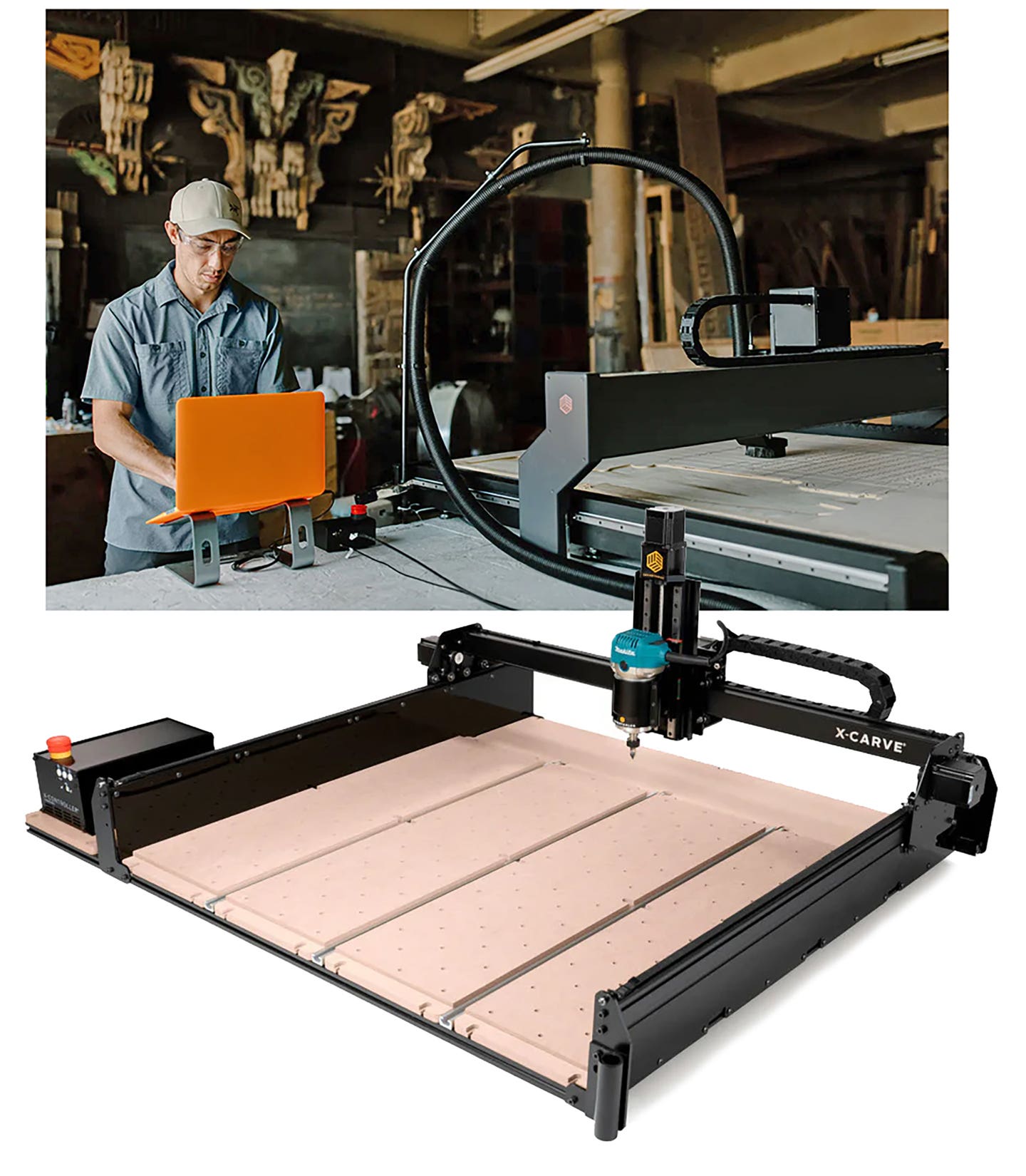Jet setters
Now based in a 150,000-sq.-ft. state-of-the-art building, filled with about 200 employees, it’s difficult to imagine a business like Custom Aircraft Cabinets operating out of a single-car garage with two…
Now based in a 150,000-sq.-ft. state-of-the-art building, filled with about 200 employees, it’s difficult to imagine a business like Custom Aircraft Cabinets operating out of a single-car garage with two employees. But that’s how it all started 25 years ago by co-owners Mike Gueringer and Paul Reesnes.
Established in 1989 and located in North Little Rock, Ark., Custom Aircraft Cabinets offers custom interior cabinetry and design services for private and corporate jets. The products and services are unique to the woodworking world as working with the general curvature of aircrafts and lightweight materials to meet Federal Aviation Administration requirements automatically holds this shop to the highest standards.
Clients are generally corporate jet manufacturers requiring custom interiors in new airplanes and make up about 90 percent of the customer base. The remaining 10 percent are remodeling jobs on planes being updated by manufacturers and sometimes, private clients. The planes are relatively small and hold 8 to 10 passengers on average. Some work is done for executive and first-class sections of commercial planes.
Probably the most impressive aspect of the company is how everything comes together under one roof. Literally dozens of construction and finishing stations and departments work together to complete projects in a seamless and timely manner. An in-house electrician runs and checks wiring, a plumber checks faucets and drains, the upholstery department creates elegant seating.
The company fabricates work for about 25 to 30 airplanes each year, usually working on about six at a time. Jobs are usually for the plane’s entire interior, including wall paneling, cabinetry, tables, galley kitchens and seating, but sometimes just an item or two from that list. Projects can take three months or more to complete. The cost of an interior ranges from a couple hundred thousand dollars to several million.
Humble beginnings
After starting their business from scratch, Gueringer and Reesnes quickly learned that persistence was the key to make it happen.
“We had worked at a couple of other aircraft companies together and we both had a vision we discussed and started our own business,” Reesnes says. “We thought we could do this “the right way” in our eyes, which meant treating our customers right and giving them more than what they expected with exceptional service.
“When we started, we didn’t have a penny to our name. We had one tool, a Shopsmith with a lathe, drill and tablesaw. Mike said we could use his garage because we didn’t have a place to work. We had enough room in there for our workbench, toolboxes and the Shopsmith. It was pretty tight.”
In other words, it wasn’t the greatest setup to impress owners of multimillion-dollar jets.
“We started making cold calls to people, but nobody would give us the time of day. But we didn’t give up,” Gueringer says. “The toughest part about getting started was earning everybody’s trust because if they don’t know you they don’t want to give you work. But we had both worked in this industry for six years and knew what we were doing for sure, so we went around and earned people’s trust. Sometimes we had to go to work in their facilities instead of ours so they could watch us, but we still got the job.”
One of their first connections was through Central Flying Service, which had a group of salespeople who would flip older airplanes. Another was with Midcoast Aviation in St. Louis, where the owners remodeled Walt Disney’s first aircraft, a Gulfstream G1.
“It was an antique plane and that was pretty exciting for us. Now it’s sitting down at the Walt Disney World theme park in Florida,” Reesnes says.
Steady growth
Custom Aircraft Cabinets now has a national clientele. The two owners discussed how the custom aircraft interior market started to get big in the mid-1970s, especially in their part of the country.
“Wichita is the aircraft capital of the world, but Little Rock is also a hot spot area of the country for this type of work. Other key spots for this type of work are Savannah, Ga., Dallas and St. Louis,” Reesnes says.
As more work came in, the owners expanded their original shop seven times to 40,000 sq. ft. But that wasn’t nearly enough.
“It didn’t make sense to keep growing over there,” Gueringer says. “Our biggest growth period was in 2006 when we doubled in size. We went from 35 to 70 employees that year. Then at the time of the move we had 110. We started growing rapidly over here. Most of them we have trained ourselves. We want them to at least know how to use shop tools when we bring them in, but we train them how to build aircraft cabinets, which is a lot more difficult than it looks than cabinetry in household furniture.
The new shop features two Thermwood 3-Axis CNC routers and a metal fabrication department. The company also has its own delivery fleet.
Stringent requirements
The FAA has requirements for weight, durability and the use of fire-retardant materials. The selection of materials and construction methods also factor into the number of passengers a plane can carry.
“The best way to explain this is if you pick up a 4x8 sheet of plywood, that’s extremely heavy, right? So we use space-age composites to build the cabinets. We cover them with thin layers of wood veneers to where it looks all wood when it’s done,” Reesnes says.
The shop works with carbon fiber and fiberglass, but its go-to base material is a honeycomb product, similar to cardboard but with aluminum cells.
Clearly, the labor behind the fabrication is extremely important. Composites are much different to work with than plywood. Holes must be drilled and filled with the appropriate fasteners in order to mount drawers and other attachments and also to attach panels. The drilled holes are filled with threaded inserts, or panel pins, and glued to create a sturdy bond.
“These techniques help us meet the minimum strength requirements to withstand landing and crashes. Lightweight also means more fuel so you can go farther and carry more people, so weight is very critical,” Reesnes says. “But also, it can’t burn. If a fire were to pop up on an airplane the cabinet has to extinguish the fire itself in a matter of seconds.”
Normally, the owner of the jet provides the engineering specs and type of material to be used.
“If there’s anything we find that won’t work for the engineering, then we have to submit it to get it changed. Everything needs to be approved. Then we still have an inspection where someone from whatever company we’re working with comes in and goes over every detail before we ship it to their facility. It’s a multistep process to make sure everything’s perfect,” Gueringer adds.
Customers are also picky about the aesthetics. “We are starting to see more paint, but wood veneer is the top choice. Things are starting to trend darker now, but a big trend has always been bird’s-eye maple. That species is tough to work with because it’s almost white and doesn’t hide anything. It’s so inconsistent from one sheet to another; it can be white or yellow. People don’t like the variations in color and markings — they want it all uniform and that’s hard to do with certain woods because of how they grow,” Gueringer says.
“Some customers have actually flown to different countries and picked out their own trees. That’s one of our other challenges. If a customer is paying so much for this aircraft, he does not want to hear any excuses, he just wants it how he wants it. And we understand that so we try very, very hard to make it happen.”
“To give you an example,” Reesnes adds, “we once had a customer come in with their own inspection team to look at a set of seats. They thought one part of the seat looked to be from a four-year-old cow and the other looked to be from a two-year-old cow. And we’ve got our glasses on and we’re looking, not really seeing it, but they wanted it addressed. We thought we were going to have to ask for birth certificates of the cows.”
On the horizon
Reesnes says the company was having its best year in 2008, then the economy crashed.
“We thought we were going to expand at that point and went out and looked at various buildings. When we finally made a decision that we were going to buy one, it had been purchased the night before. But it was good because we never would have been able to make it in that building. So we stayed where we were and got through it.”
The owners say there are plans to expand even more. “The challenge will be finding skilled workers. It’s very different to find people of this generation who want to get involved in cabinetry construction. College grads aren’t coming out looking for that kind of work,” Gueringer says.
He emphasizes that the goal he and Reesnes had at the onset of the business was to have employees that felt like they belonged and were not just a number. After all, that is partially why they started on their own in the first place. They offer what they consider a very good benefits package with health and retirement benefits and provide a clean, air-conditioned facility.
“Our faith is big to us. That’s why we’re here. We’re very passionate about what we do. Our quality and service are something that nobody in this industry can match. We try to set our standards even higher than that of our customers. Sometimes our customers will says something is fine, but we will want to fix it anyway. And that’s what keeps them coming back. We don’t want to do just one job for a company. We want to be their partner and then work with them as long as we can,” Reesnes says.
A tour of the facility can be viewed at www.customaircraftcabinets.com.
Contact: Custom Aircraft Cabinets, 5510 Landers Road, North Little Rock, AR 72117. Tel: 501-955-6500.
This article originally appeared in the September 2015 issue.


